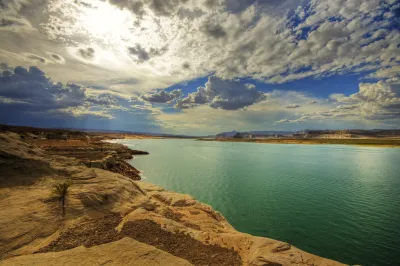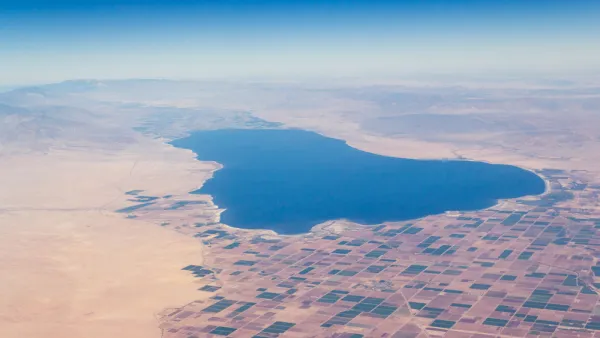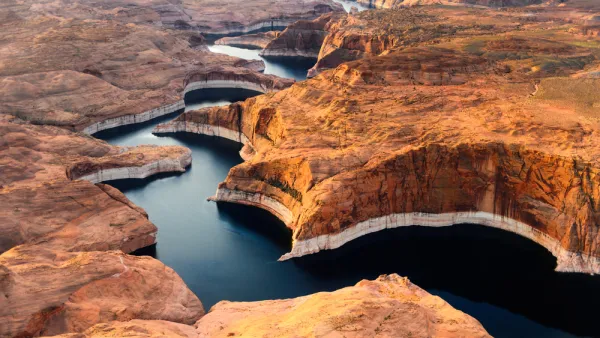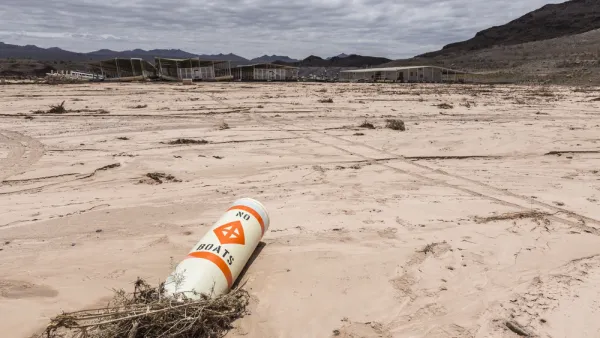With warmer temperatures sapping the flow of water and communities clamoring for higher volumes, the Colorado River needs strict management to continue serving millions of people and farms.

The Colorado River, which supplies water to 40 million people in seven western states, faces a crisis as its resources are stretched thin and climate change threatens its future. Its two largest reservoirs, Lake Mead and Lake Powell, are both below 50% capacity, and the drying trend continues as rainfall in the region remains lower than normal. Sammy Roth interviewed Jeff Kightlinger, the general manager of Southern California's Metropolitan Water District, the entity responsible for operating the Colorado River Aqueduct and distributing water to almost 19 million people.
Kightlinger admits there are formidable challenges facing Southern California as climate change accelerates warmer and drier conditions and growing populations demand more water. He suggests that the Imperial Irrigation District (IID), which serves the Imperial Valley and uses the largest share of the Colorado River's water, must "become a responsible, reliable" partner in the Drought Contingency Plan that California and neighboring states have developed in order to manage the Colorado's limited resources. The IID wants to see more resources directed toward stabilizing the Salton Sea, a major ecological challenge for the area.
"The next 25 years look like it’s going to be a real hard haul," Kightlinger says, "but I believe it’s doable, as long as the parties can be smart and work together."
FULL STORY: Boiling Point: Climate change spells trouble for the Colorado River. But there’s still hope

National Parks Layoffs Will Cause Communities to Lose Billions
Thousands of essential park workers were laid off this week, just before the busy spring break season.

Retro-silient?: America’s First “Eco-burb,” The Woodlands Turns 50
A master-planned community north of Houston offers lessons on green infrastructure and resilient design, but falls short of its founder’s lofty affordability and walkability goals.

Delivering for America Plan Will Downgrade Mail Service in at Least 49.5 Percent of Zip Codes
Republican and Democrat lawmakers criticize the plan for its disproportionate negative impact on rural communities.

Test News Post 1
This is a summary

Test News Headline 46
Test for the image on the front page.

Balancing Bombs and Butterflies: How the National Guard Protects a Rare Species
The National Guard at Fort Indiantown Gap uses GIS technology and land management strategies to balance military training with conservation efforts, ensuring the survival of the rare eastern regal fritillary butterfly.
Urban Design for Planners 1: Software Tools
This six-course series explores essential urban design concepts using open source software and equips planners with the tools they need to participate fully in the urban design process.
Planning for Universal Design
Learn the tools for implementing Universal Design in planning regulations.
EMC Planning Group, Inc.
Planetizen
Planetizen
Mpact (formerly Rail~Volution)
Great Falls Development Authority, Inc.
HUDs Office of Policy Development and Research
NYU Wagner Graduate School of Public Service





























